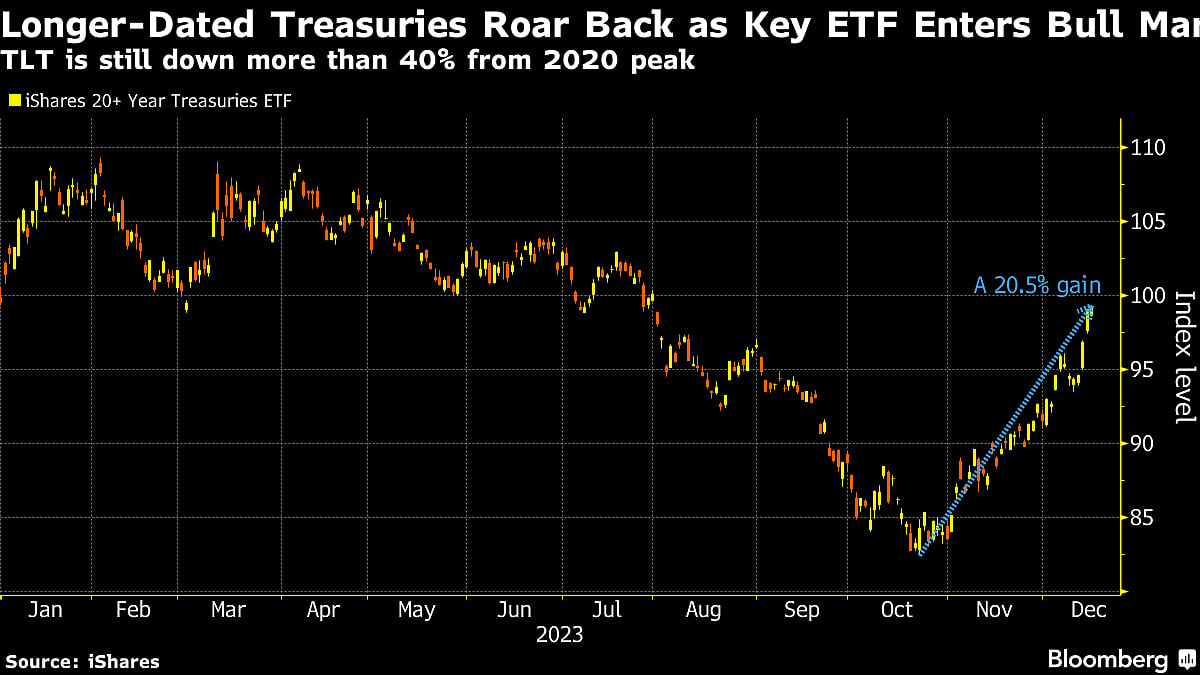Long-Dated Treasuries Enter Bull Market As Fed Pivot Feeds Rally
The iShares 20+ Year Treasury Bond ETF, a popular tool for betting on long-dated debt, jumped to touch 99.35 on Friday.

(Bloomberg) -- A vehicle used to track longer-dated US government bonds surged into a bull market, as investors seek to end three years of pain on the Federal Reserve’s willingness to consider interest-rate cuts.
The iShares 20+ Year Treasury Bond ETF, a popular tool for betting on long-dated debt, jumped to touch 99.35 on Friday. That’s a gain of 21% from the 16-year low reached on Oct. 23, qualifying as a bull market. The gauge is still down more than 40% since it peaked in 2020.
While many investors are still focusing on shorter-dated bonds as a safer bet amid an uncertain outlook for monetary policy, the potential for steep gains at the longer end is drawing plenty of interest. The fund received $1.3 billion of new money on Friday, the biggest inflow in almost five months.
However, concerns of an over-supply of issuance in long-term debt and the threat that inflation could reignite next year are weighing on some investors, as they seek compensation for the added risk. Kellie Wood, deputy head of fixed income at Schroders Plc in Sydney, said her firm has been focusing on shorter-dated notes.
“This is totally a case of FOMO,” or a fear of missing out, Wood added. “Retail investors have been waiting to see more positive returns from fixed income before allocating after many years of negative returns.”

READ: Wall Street Loads Up on Short-Dated Debt to Trade Fed Pivot
Traders who bought the 10-year US note sold on Nov. 8, would have stood to gain 5% if they offloaded the security at the end of last week, data compiled by Bloomberg show. By comparison, the two-year note auctioned in late October gained about 1.7% since then.
The ETF entered a bear market in February 2021 when its decline from an August 2020 peak first exceeded 20%. It previously saw rises of more than 10% from troughs in December 2021, August 2022 and March 2023, but fell short of the 20% guideline used to define the end of a bear market and the start of a new bull rally.
More stories like this are available on bloomberg.com
©2023 Bloomberg L.P.